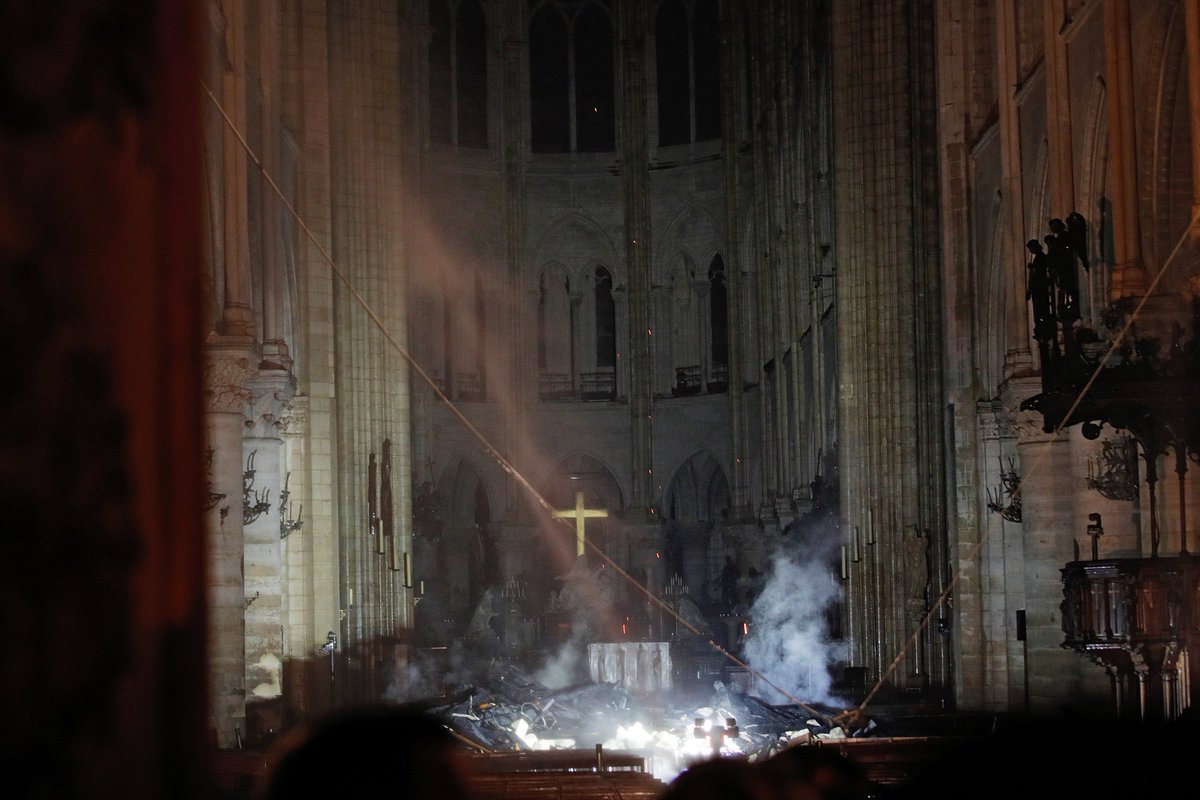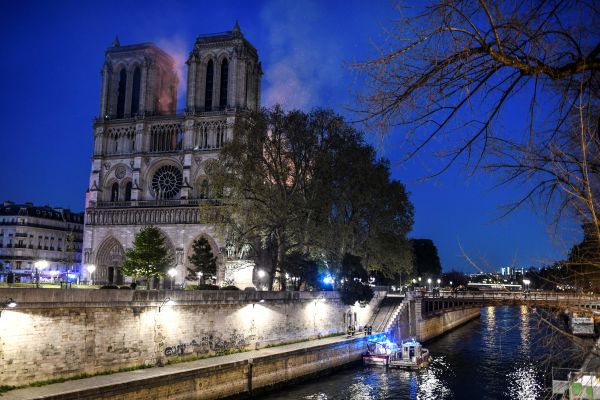


by cnn.com–The cathedral has been a symbol of Catholicism and French identity for over 850 years. Its foundation stone was laid in 1163 by Pope Alexander III, and the cathedral was completed in the 13th century. Today, with its towers, spire, flying buttresses and stained glass, Notre Dame is considered a feat of architecture, as well as a major religious and cultural symbol of France. Its central spire, which tragically collapsed Monday in the blaze, was built in the 19th century amid a broad restoration effort, partly buoyed by the success of Victor Hugo’s novel “The Hunchback of Notre Dame” in 1831. The cathedral draws millions of visitors. Located in Île de la Cité, a small island in the middle of the city, the cathedral is one of Paris’ most popular attractions, drawing an estimated 13 million visitors a year.
by catholicherald.co.uk —The roof of Notre Dame cathedral in Paris has collapsed after the building caught fire on Monday afternoon. Footage posted online shows flames engulfing the upper part of the building, including the spire and bell towers. Unconfirmed reports suggest most of the major religious and artistic relics, including the Crown of Thorns, were removed as the fire began. The cause remains unclear, but officials have said say it could be linked to renovation work.
A major operation is now underway, officials added, and an area of Paris around the cathedral has been cleared. Built between the 12th and 14th centuries, the cathedral is one of the most recognisable landmarks in the French capital, receiving more than 12 million visitors a year. Cardinal Daniel DiNardo, President of the US bishops’ conference, called the fire “horrific.” “This particular cathedral is not only a majestic Church, it is also a world treasure. Noble in architecture and art, it has long been a symbol of the transcendent human spirit as well as our longing for God,” the cardinal said. “Our hearts go out to the archbishop and the people of Paris, and we pray for all the people of France, entrusting all to the prayers and intercession of the Mother of God, especially the firefighters battling the fire.” Cardinal Vincent Nichols, President of the Bishops’ Conference of England and Wales, said: “It is an iconic building visited by millions but more importantly is a symbol of faith which is at the heart of Europe. We pray the fire is extinguished quickly & with a shared effort the building made good.”
by NYT – What we know about the damage
• By 11 p.m., Mr. Gallet said that the structure, including its two frontal towers, had been “saved and preserved as a whole,” but that two-thirds of the roof had been destroyed. • “The worst has been avoided even though the battle is not completely won,” President Emmanuel Macron of France said, adding that he would launch a national funding campaign to help rebuild the cathedral. • The 295-foot spire, a wood-frame structure covered in lead that was built when the cathedral was renovated in the 19th century, appeared to be destroyed: After its partial collapse, the fire consumed much of the roof where the spire had stood. • Some of the cathedral’s art may have been saved because of recent renovations. Last week, for instance, 16 copper statues representing the Twelve Apostles and four evangelists were removed with a crane so that the spire could be renovated. • Firefighters were able to save some of the cathedral’s artworks, including linen fabric associated with Saint Louis, the Holy Crown of thorns and the cathedral’s treasury, according to Monsignor Chauvet.
What we don’t know
• The cause of the fire remains unknown. • The condition of many works, inside the cathedral and part of its structure, remains unknown. The flames threatened to melt the cathedral’s three huge “rose” stained-glass windows, for instance, and could have destroyed or damaged the church’s three organs and dozens of paintings and sculptures, some dating to the 17th century. • Many parts of the structure were already damaged and in need of restoration: Broken gargoyles and fallen balustrades had been replaced by plastic pipes and wooden planks. Such areas may have been particularly vulnerable to the flames and falling debris



